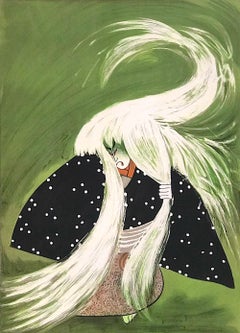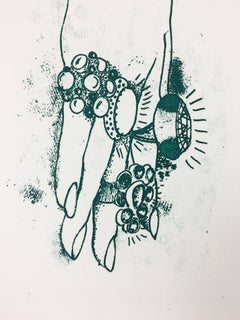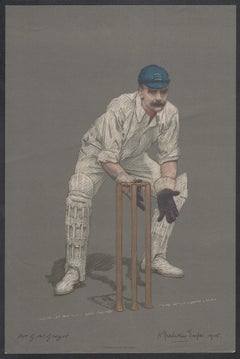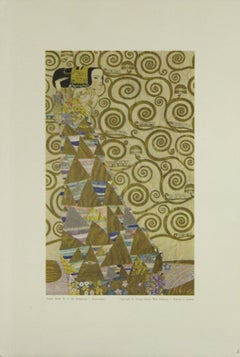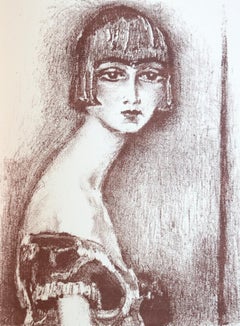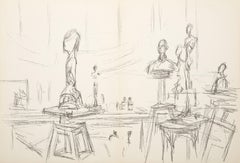20th Century Portrait Prints
Contemporary 20th Century Portrait Prints
Lithograph
20th Century Portrait Prints
Etching
Victorian 20th Century Portrait Prints
Lithograph
20th Century Portrait Prints
Lithograph
Modern 20th Century Portrait Prints
Lithograph
Expressionist 20th Century Portrait Prints
Lithograph
Art Nouveau 20th Century Portrait Prints
Drypoint, Etching
Modern 20th Century Portrait Prints
Etching
Post-War 20th Century Portrait Prints
Photographic Paper, Black and White, C Print, Silver Gelatin
American Realist 20th Century Portrait Prints
Offset
Surrealist 20th Century Portrait Prints
Lithograph
Contemporary 20th Century Portrait Prints
Screen
Naturalistic 20th Century Portrait Prints
Etching
Art Nouveau 20th Century Portrait Prints
Lithograph
Performance 20th Century Portrait Prints
Lithograph
American Impressionist 20th Century Portrait Prints
Paper
Abstract Geometric 20th Century Portrait Prints
Pop Art 20th Century Portrait Prints
Silver Gelatin
Pop Art 20th Century Portrait Prints
Paper, Ink
Contemporary 20th Century Portrait Prints
Etching, Aquatint
American Impressionist 20th Century Portrait Prints
Paper, Lithograph
American Impressionist 20th Century Portrait Prints
Screen
Impressionist 20th Century Portrait Prints
Paper, Screen
Post-Impressionist 20th Century Portrait Prints
Lithograph, Paper
Post-War 20th Century Portrait Prints
Photographic Paper, Black and White, C Print, Silver Gelatin
Abstract 20th Century Portrait Prints
Lithograph
Modern 20th Century Portrait Prints
Lithograph
Contemporary 20th Century Portrait Prints
Lithograph
Victorian 20th Century Portrait Prints
Lithograph
Victorian 20th Century Portrait Prints
Lithograph
Impressionist 20th Century Portrait Prints
Offset
American Modern 20th Century Portrait Prints
Offset
Post-War 20th Century Portrait Prints
Photographic Paper, Black and White, C Print, Silver Gelatin
Modern 20th Century Portrait Prints
Lithograph, Paper
Modern 20th Century Portrait Prints
Drypoint, Etching
20th Century Portrait Prints
Lithograph
Cubist 20th Century Portrait Prints
Lithograph, Stencil
Surrealist 20th Century Portrait Prints
Lithograph
Performance 20th Century Portrait Prints
Lithograph
Modern 20th Century Portrait Prints
Drypoint, Etching
American Realist 20th Century Portrait Prints
Offset
Gothic 20th Century Portrait Prints
Offset
Pop Art 20th Century Portrait Prints
Color, Archival Pigment
Other Art Style 20th Century Portrait Prints
Lithograph
American Realist 20th Century Portrait Prints
Lithograph
Realist 20th Century Portrait Prints
Lithograph
American Modern 20th Century Portrait Prints
Offset
Modern 20th Century Portrait Prints
Lithograph
Vienna Secession 20th Century Portrait Prints
Paper
Cubist 20th Century Portrait Prints
Lithograph
Contemporary 20th Century Portrait Prints
Lithograph
Pop Art 20th Century Portrait Prints
Lithograph
Pop Art 20th Century Portrait Prints
Screen
Modern 20th Century Portrait Prints
Lithograph
Post-War 20th Century Portrait Prints
Photographic Paper, Black and White, C Print, Silver Gelatin
Modern 20th Century Portrait Prints
Lithograph
Modern 20th Century Portrait Prints
Foil
Contemporary 20th Century Portrait Prints
Linocut
Cubist 20th Century Portrait Prints
Etching
Modern 20th Century Portrait Prints
Etching
